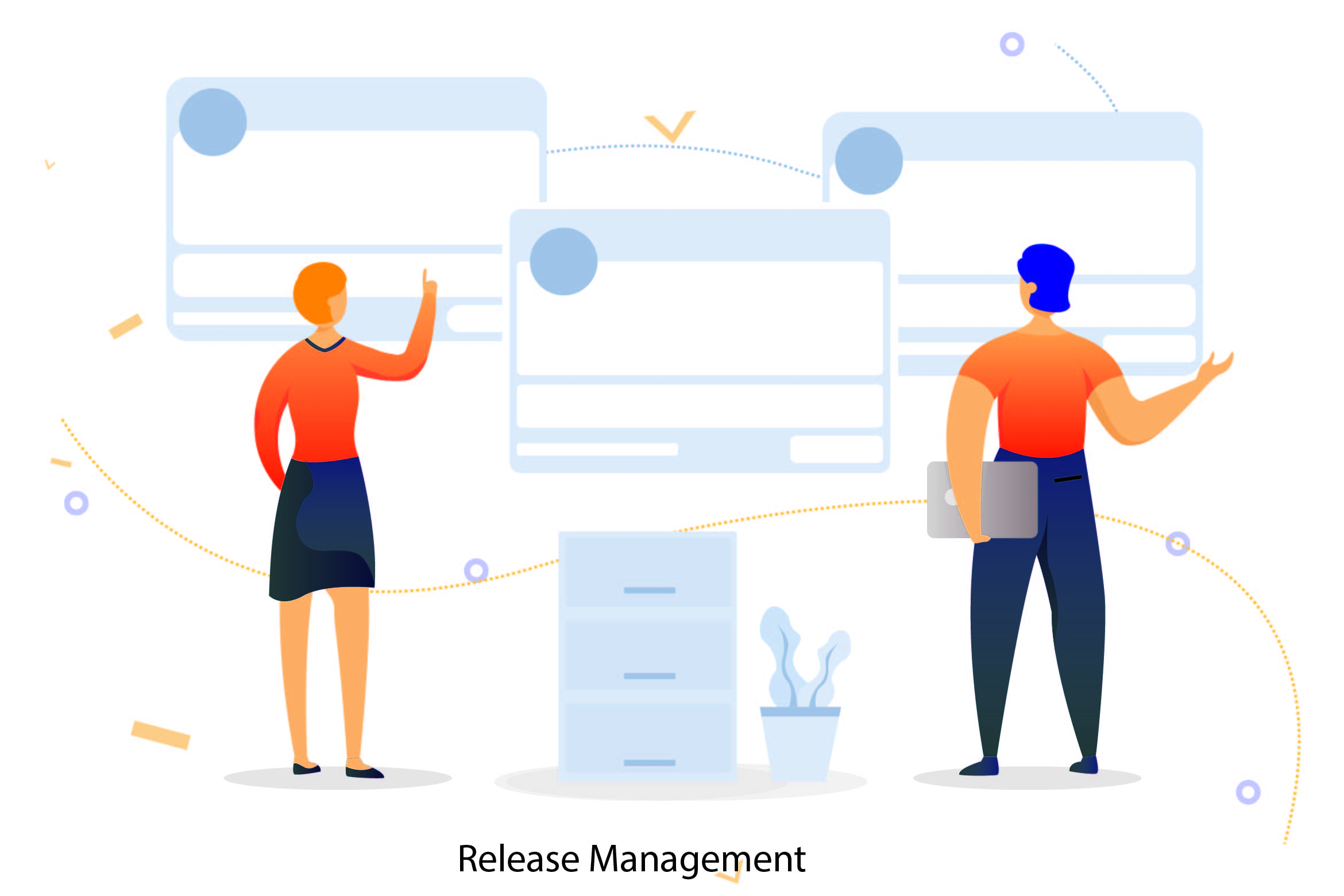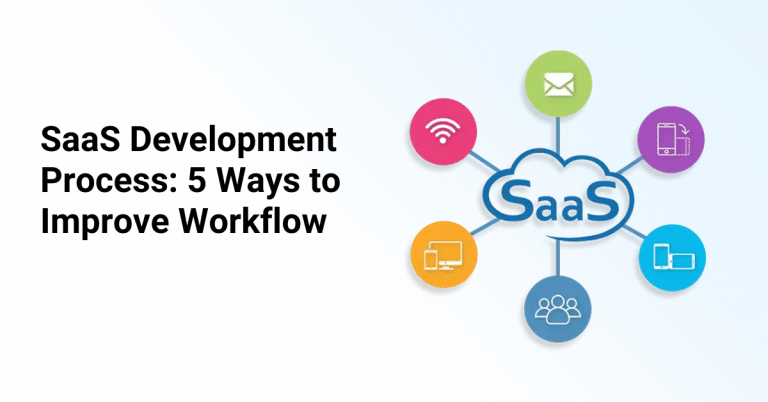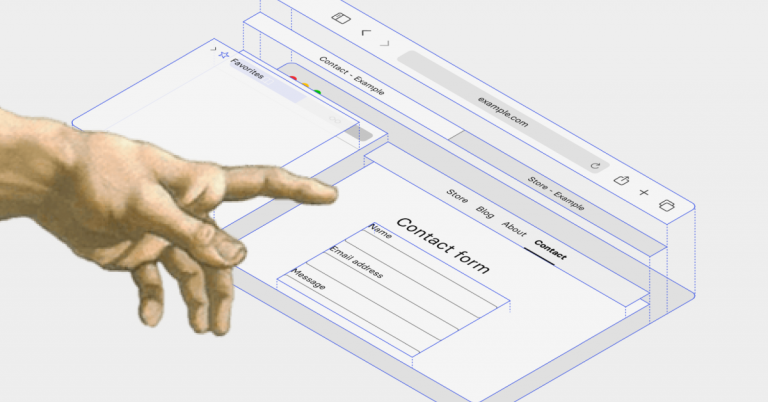This article was refreshed on February 4th, 2025.
Does the environment of your business look like this with each product release?

Chaos. Pure chaos.
Even if it doesn’t look chaotic, it probably feels it.
Whether it’s last-minute bugs that cause 87 problems two days before a product release or the CEO wanting to change the entire branding just weeks beforehand, there’s always something — product releases rarely go as planned.
Learn important product release management best practices to consider before every product release and utilize our easy-to-use checklist to help with effectiveness and standardizations so your business stays on the right track.
Table of Contents
- What Is Product Release Management?
- Navigating the Product Release Management Process
- The Product Release Management Process: 7 Phases To Help Ensure Success
- Product Release Management Processes Made Simple With AnnounceKit
What Is Product Release Management?
Product release management refers to releasing software to the public and the steps involved from start to finish — planning, designing, scheduling, testing, deploying, and controlling.
Ensuring this process runs smoothly is important because it helps teams to efficiently deliver applications and product upgrades to their audience while maintaining the integrity of the production environment.
Product managers are typically in charge of leading both the tactical and strategic steps in planning for a product launch, which can be a big job.
AnnounceKit offers products and solutions to help product release processes run smoothly and efficiently and help teams tackle common product release management issues. Try our software today.

Manage Product Release For Your Brand:
Quick Setup, Easy To Use
Release notes, changelog, and other product announcement
tools and features from a single place.
The Importance of the Product Release Process and Management
When conducted effectively, the product release process helps facilitate successful releases through thoughtful organization. It also reduces quality problems and strengthens communication with stakeholders and customers.
These improvements, coupled with the standardization of the product release process, can enable your team to repeatedly produce quality products with shorter times to market, allowing your company to be more responsive.
Product release management also helps streamline and refine the development and operations process. By completing project items through a structured order, your team can implement auditable release controls, therefore creating an archive for all releases throughout each project’s life cycle. With the product release process, you’ll rely on one single, well-documented operating procedure that will be applied and followed for all releases. Following a stringent, well-refined process will also allow your teams to focus on each project and draw more useful lessons from experience to apply in future releases.
Increased coordination, better communication, and a time-tested process also mean fewer surprises. Your team will have ample opportunity to resolve configuration issues and bug fixes, meaning you’ll avoid shortened, unexpected deadlines from fighting fires and applying “patches and prayers.”
In short, comprehensive product release management breaks down the launch process into smaller, digestible tasks. As a result, you can holistically improve product delivery while setting up a good defense against potential launch issues.
Navigating the Product Release Management Process
Identifying Common Issues Faced
A product release launch rarely happens without any issues. In fact, a handful of issues are common with most product releases. Despite a product manager and their team’s best efforts, these common issues will likely still arise:
- Undetected bugs and defects: Even with rigorous testing, undetected bugs and defects still emerge after a product release, leading to unexpected system crashes, errors, and user dissatisfaction.
- Deployment failures: These often occur due to inconsistencies in deployment scripts, environmental differences, and unexpected dependencies, which can lead to service disruptions.
- Communication breakdown: Poor communication among cross-functional teams may result in misalignment of expectations, missed deadlines, and misunderstandings about release requirements.
- Scope creep: This is when additional features or changes are introduced during the release process, often leading to delays, resource constraints, and potential conflicts.
- Inadequate rollback strategy: If there is a critical issue or failure post-release, an inadequate or missing rollback strategy can prolong downtime and negatively impact user experience.
Release Planning Phase Checklist
- Clearly define release objectives and goals.
- Identify the scope of the release.
- Determine the target audience.
- Select appropriate language and communication channels.
- Outline the deployment process.
- Identify stakeholders.
- Assess potentials risks and devise metigation strategies.
- Establish and approval process.
Enhancing Clear and Effective Communication
Without clear and effective communication, it’s difficult to know if all stakeholders are aligned and informed about the changes, progress, and potential risks throughout the product release management process.
You can foster regular and open communication to minimize misunderstandings and promote a collaborative environment by:
- Holding regular team meetings
- Pushing out status updates
- Documenting the process
- Using a centralized communication platform to share information
With open communication, active listening, and addressing concerns, you’ll foster an environment that leads to better outcomes in the product release management process.
Managing Scope and Expectations
Your team should pay extra attention to clearly defining the objectives of the product release, its features, and the timeline of the release. You should also manage the expectations of all stakeholders to:
- Avoid scope creep
- Mitigate risks
- Deliver a product that reaches the desired goals
How do you best manage scope? With a well-defined and documented scope statement. This statement should clearly outline the features and functionalities included in the release and any exclusions or limitations. This will help avoid unnecessary changes or additions that can affect the product release timeline.
To effectively manage stakeholder expectations, you’ll need to ensure regular communication with stakeholders to keep them informed on the progress of the release and any changes that might impact their expectations. Doing so will help mitigate any potential conflicts or misunderstandings and better ensure your stakeholders are happy with the final product.
The Product Release Management Process: 7 Phases To Help Ensure Success
#1: Release Planning Phase
This is the first phase because it sets the foundation for a successful release by defining objectives, scope, stakeholders, and strategies. The release planning phase ensures alignment among teams, establishes clear expectations, and minimizes misunderstandings throughout the process.
Follow these steps to successfully implement this phase:
- Set clear objectives: Define the purpose and goals of the release to help your team focus on achieving specific outcomes.
- Define the scope: Clearly outline what features, enhancements, or fixes will be included in the release to help prevent scope creep.
- Identify target audience: Determine who the release is intended for — internal users, customers, or a specific market segment.
- Create a communication strategy: Establish how and when communication about the release will occur, including announcements, documentation, and support.
- Assess your risk: Identify potential risks associated with the release, such as compatibility issues or security vulnerabilities.
- Map stakeholders: Identify all stakeholders involved in the release — internal and external — and define their roles.
- Build an approval process: Define a clear process for obtaining approvals from relevant stakeholders before proceeding to the next phase.
Anticipate these common issues:
- Failing to clearly define objectives can lead to confusion and misalignment among teams.
- A lack of a well-defined scope can result in unexpected changes during the later stages of the release.
- Poor communication strategies can lead to misunderstandings and misinformation.
- Neglecting risk assessment can result in unforeseen issues during deployment.
- Ignoring key stakeholders can hinder success and adoption.
Release Planning Phase Checklist
- Clearly define release objectives and goals.
- Identify the scope of the release.
- Determine the target audience.
- Select appropriate language and communication channels.
- Outline the deployment process.
- Identify stakeholders.
- Assess potential risks and devise mitigation strategies.
- Establish an approval process.
#2: Pre-Release Preparation and Testing
The second phase ensures the release is high-quality, functional, and meets user expectations. With preparation and testing, product managers and their teams can minimize post-release issues and enhance user satisfaction.
Follow these steps to successfully implement this phase:
- Documentation Creation: Develop clear and comprehensive documentation that includes release notes, installation guides, and user manuals.
- Guideline Adherence: Ensure that the development adheres to established coding standards and best practices.
- Testing Strategy: Plan the testing process, encompassing unit, integration, regression, and user acceptance testing.
- Bug Resolution: Address and resolve any identified bugs or defects before moving to deployment.
- User Acceptance Testing (UAT): Engage relevant stakeholders to validate that the release meets user requirements and expectations.
- Scenario Documentation: Document successful and unsuccessful testing scenarios for reference and improvement.
- Issue Tracking: Implement a system to track and manage reported issues during testing.
Anticipate these common issues:
- Insufficient or unclear documentation can lead to confusion for users and support teams.
- Inadequate testing coverage can result in undetected bugs or functionality gaps.
- Failing to involve stakeholders in UAT may result in the release not meeting user needs.
- Ignoring reported bugs can lead to post-release issues that affect user experience.
- Poorly managed issue tracking can lead to overlooked problems and delays in resolution.
Pre-Release Preparation and Testing Checklist
- Create comprehensive documentation that is clear and concise.
- Verify adherence to organizational guidelines and coding standards.
- Perform thorough tests.
- Conduct UAT with relevant stakeholders.
- Identify and document all testing scenarios.
- Address and resolve any reported bugs and issues.
#3: Deployment Phase
Here is where you’ll ensure the release is effectively transitioned to production environments or user devices. A well-executed product deployment guarantees a seamless user experience and minimizes disruptions.
Follow these steps to successfully implement this phase:
- Deployment Schedule: Plan the deployment timeline, considering peak usage times to minimize user impact.
- Risk Management: Mitigate potential risks associated with deployment, such as data loss or service interruptions.
- Approval and Authorization: Obtain necessary approvals from relevant parties before proceeding with deployment.
- Version Control: Ensure the correct version of the release package is used for deployment.
- Deployment Testing: Test the entire deployment process in a controlled environment to identify and address potential issues.
- Monitoring and Validation: Continuously monitor the deployment process to ensure that it progresses smoothly.
- Rollback Plan: Prepare a well-defined plan for reverting the previous version in case of deployment failure.
Anticipate these common issues:
- Inadequate planning can lead to disruptions during deployment.
- Neglecting to mitigate risks can result in unexpected issues.
- Deploying the wrong version can lead to inconsistencies and unintended changes.
- Failing to thoroughly test the deployment process can lead to errors during the actual deployment.
- An absent or incomplete rollback plan can prolong downtime and user dissatisfaction.
Deployment Phase Checklist
- Plan the deployment schedule in advance.
- Double-check that potential risks have been identified and mitigated.
- Obtain necessary approvals.
- Package the release with appropriate version control and labeling.
- Verify the deployment package is authorized and ready for release.
#4: Release Execution
This phase marks the actual deployment of the product and release to production environments. Successful execution here ensures that users have access to the latest erosion of the product with minimal disruptions.
Follow these steps to successfully implement this phase:
- Deployment Monitoring: Continuously monitor the deployment process and promptly address any unexpected issues.
- Functional Validation: Validate the deployment release functions as expected in the production environment.
- Performance Metrics: Monitor system performance and gather metrics to assess the impact of the release.
- User Communication: Inform users about the release, its benefits, and any changes in functionality.
- Support Readiness: Ensure the support team is prepared to address user inquiries and issues post-release.
- Feedback Collection: Establish channels for users to provide feedback about their experience with the new release.
Anticipate these common issues:
- Failing to monitor the deployment process can lead to unnoticed issues that affect the users.
- Deployed releases not functioning as expected can lead to user dissatisfaction.
- Ignoring performance metrics can result in underperforming systems and slow response times.
- Poor communication can lead to confusion and frustration among users.
- A support team that is unprepared for user inquiries can hinder problem resolution.
Release Execution Checklist
- Deploy the release to the designated environment(s).
- Monitor the deployment process to ensure it runs smoothly.
- Validate the release in the target environment to confirm functionality.
- Conduct post-deployment testing to identify any arising issues.Monitor system performance and gather metrics to assess release impact.
#5: Evaluation and Continuous Improvement
This phase allows for reflections on the release process so product managers and their teams can learn from successes and failures and make informed decisions for future releases. Overall, this phase helps contribute to ongoing product release management enhancement.
Follow these steps to successfully implement this phase:
- Stakeholder Feedback Collection: Gather feedback from stakeholders involved in the release process.
- Quality and Performance Assessment: Evaluate whether the release met the predefined quality and performance standards.
- Error Documentation: Document any errors, challenges, and lessons learned during the release for reference and improvement.
- Knowledge Transfer: Facilitate knowledge sharing between different teams involved in the release.
- Debate and Discussion: Encourage open discussions and debates based on the release process and outcomes.
Anticipate these common issues:
- Failing to collect feedback can lead to missed opportunities for improvement.
- Not assessing quality and performance can lead to repeated issues in subsequent releases.
- Inadequate documentation of errors hinders future reference and improvement.
- Failing to transfer knowledge between teams can result in repeated mistakes and inefficiencies.
- Ignoring debate and discussion prevents learning from past experiences.
Evaluation and Continuous Improvement Checklist
- Collect feedback from all stakeholders involved.
- Asses whether the release met quality and performance requirements.
- Document any errors, challenges, and lessons learned.
- Facilitate knowledge transfer between teams.
- Analyze the process and identify areas for improvement.
- Review and refine the release process based on feedback and analysis.
- Implement automation and standardization wherever possible.
#6: Communication and Documentation
Here is where you’ll ensure that all stakeholders are informed about the release process and outcomes by facilitating knowledge transfer and supporting future releases with thorough documentation.
Follow these steps to successfully implement this phase:
- Team Communication: Maintain open and transparent communication channels among teams involved in the release.
- Stakeholder Updates: Keep stakeholders well-informed about the progress, status, and outcomes of the release.
- Documentation Updates: Update documentation to reflect changes and improvements made during the process.
- Knowledge Centralization: Ensure that documentation is accessible and centralized for easy reference.
- Feedback Channels: Establish channels for stakeholders to provide feedback on the release process.
Anticipate these common issues:
- Poor communication can lead to misunderstandings and misaligned expectations.
- Failing to update stakeholders can cause confusion and frustration.
- Ignoring documentation updates can lead to relying on outdated information.
- Scattered documentation hinders knowledge transfer and process improvement.
- Failing to provide feedback avenues prevents valuable input for process enhancement.
Communication and Documentation Checklist
- Maintain clear and transparent communication channels among teams.
- Keep stakeholders well-informed about the status and progress.
- Update documentation to include any changes or improvements.
- Ensure all team members are well-versed in the standardized release process.
#7: Post-Release Monitoring and Support
The final phase ensures users have a positive experience with the product release and addresses any potential issues. It also helps to maintain user satisfaction and guide future improvement.
Follow these steps to successfully implement this phase:
- Issue Monitoring: Continuously monitor for post-release issues and promptly address any that arise.
- Timely Support: Provide timely and effective support to users encountering any problems.
- User Feedback Utilization: Track and analyze user feedback to identify trends and areas for improvement.
- User-Requested Features: Incorporate user-requested features and improvements into future iterations.
- Performance Optimization: Implement performance optimizations based on user behavior and feedback.
- Implement Support Ticket System: Add help desk features to your Gmail account.
Anticipate these common issues:
- Neglecting post-release monitoring can lead to unresolved issues affecting user experience.
- Slow or inadequate support can frustrate users and hinder problem resolution.
- Ignoring user feedback prevents valuable insights for future enhancements.
- Failing to incorporate user-requested features can lead to user dissatisfaction.
- Ignoring performance issues can lead to a decrease in user satisfaction and engagement.
Post-Release Monitoring and Support Checklist
- Continuously monitor the released product for any post-release issues.
- Provide timely support and assistance to users facing problems.
- Track user feedback and requests for future improvements.
- Incorporate user feedback into future iterations of the product.
Product Release Management Processes Made Simple With AnnounceKit
The product release process is all-encompassing, and having a thorough product release management team in place can help ensure a successful release. But product releases don’t always go as planned — there’s almost always room for improvement.
AnnounceKit offers many solutions to help ensure a smooth and successful product release process from start to finish, and evaluating the product release management process as a whole is a great place to start when trying to improve. Here you can conduct a quick evaluation of the current people involved, their processes, performance, and capabilities. Our product release management tool can help, too.
You can also:
- Improve your internal communication strategy to help shorten feedback processes and better understand stakeholders’ responsiveness.
- Increase the number of tests to help improve efficiency.
- Standardize and automate your processes so your team can spend less time on repetitive tasks and instead focus on development, configuration, and testing.
AnnounceKit not only helps companies communicate product updates with their customers, but it also offers countless tools to ensure smooth product release processes and more. Get started with us today.

Manage Product Release For Your Brand:
Quick Setup, Easy To Use
Release notes, changelog, and other product announcement
tools and features from a single place.







